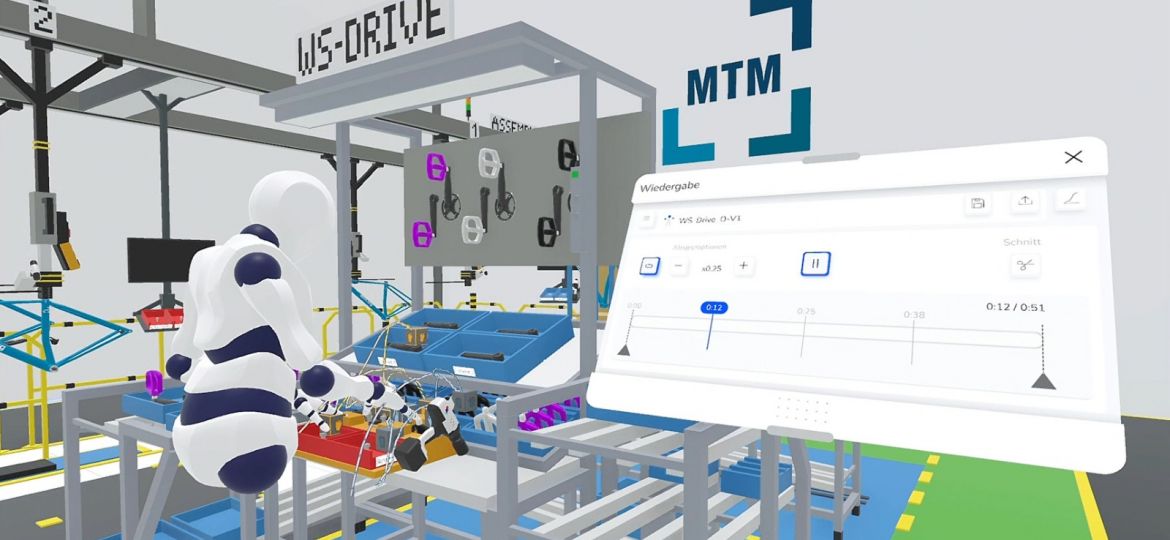
MTMmotion®: How Automated MTM Analysis Works!
Digital technologies have triggered a profound transformation in many areas of industry in recent years. In Industrial Engineering, new technological developments increasingly support the analysis and planning of work systems. Technologies such as Human Simulation, Virtual Reality, and Motion Capture capture and process human movements, while AI models are playing an increasingly important role in interpreting and analyzing these data.
Is MTM still necessary when using these digital technologies?
Time and ergonomic evaluation is the key criterion for designing human work. When applying digital technologies, there are several challenges that make it difficult to present and evaluate these processes objectively:
• Incomplete workflows: Digitally captured workflows often simplify real processes and, for example, do not fully capture finger movements.
- Influence of equipment: Movements are not executed in their natural form because the equipment (e.g., VR headsets, controllers, MoCap suits) alters the movement patterns.
- Lack of feeling for strain: The sense of strain caused by weights and forces is generally absent.
- Feeling of being observed: People performing the tasks may feel observed, which can affect their natural movements.
Therefore, MTM remains indispensable even when using new technologies because it allows an objective evaluation of human work. Specifically, the basic time remains one of the most important metrics for comparing different planning options.
How can users of digital technologies integrate MTM effectively?
The MTM ASSOCIATION e.V. addresses this challenge with the development of MTMmotion®. MTMmotion® is an interface that automatically translates digital human movement data into correct, rule-compliant MTM analyses and provides an ergonomic evaluation based on EAWS®. This allows technology users to design human workplaces in a targeted manner.
What are human movement data and where do they come from?
Human movement data includes relevant information about various types of movements performed by the human body. This includes, for example, body movements, arm movements, and leg movements. These data are captured and processed by digital technologies. For example, a VR headset captures head movements through integrated motion sensors. The data is then transmitted in a defined format to the MTMmotion® interface.
What happens with the provided data?
MTMmotion® then translates this data into correct, rule-compliant MTM analyses or ergonomic evaluations based on EAWS®. The result is, for example, an MTM-UAS® analysis that matches the collected data. This allows users of the technologies to design workplaces in a targeted, time-efficient, and ergonomic manner.
Which technology allows you to test the automated creation of MTM analyses?
The MTM ASSOCIATION e.V. makes the MTMmotion® interface available to all interested technology providers so that users can leverage the proven MTM methodology. One technology that utilizes the functionality of MTMmotion® is the VR application by Halocline. With it, users can design, experiment with, and now even evaluate workplaces using MTM. This allows them to compare variants thoroughly, assess their strengths and weaknesses, and exploit optimization potential – all without additional effort or deep expertise.
In the video, you can see how the functionalities of Halocline and the data transfer to the MTMmotion® interface are tested by employees of the MTM ASSOCIATION e.V.
Have questions? Feel free to send us an email at martin.benter@mtm.org to learn more about MTMmotion®.